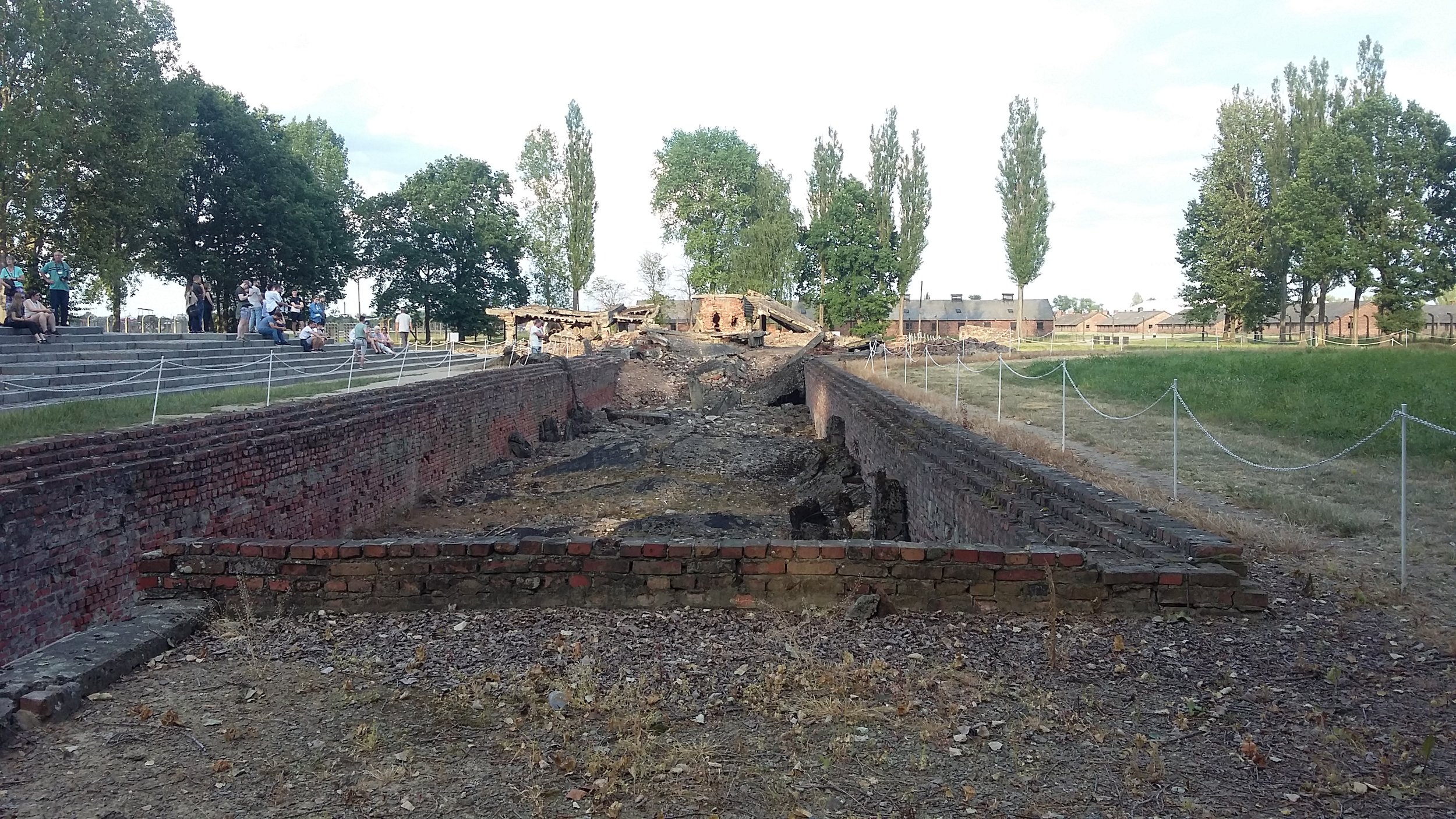Auschwitz, Poland • July 2017 • Length of Read: 3 Minutes
Against my better judgement, the first thing that struck me when crossing the railroad tracks running directly through the heart of Auschwitz-Birkenau was the sheer beauty of the place. As I stopped to take in the 360-degree panorama, not a breath of wind in the air, only the soft chirping of birds broke the silence; hauntingly highlighting the nascent wonder of life in a place where so many were horrifically lost. Rolling fields of green sprawled out as far as my eyes could see beyond three sides of the rectangular-shaped concentration camp and the sun set from a perfectly blue sky behind the giant evergreen trees that lined the fourth. It was nothing but picturesque. A wave of guilt spread through me as a result of these happy thoughts but I was soon snapped out of my trance and back to the paradoxical reality of where I was standing as my guide of thirty years’ experience coughed and continued with his educational tour. The trodden ground under my feet contained the ashes of an estimated 1.1 million souls who were mercilessly killed here before the close of the Second World War.
Named after the nearby Polish town of Oświęcim, Auschwitz is actually a network of three concentration camps that were built by the Nazi’s in this annexed area. It was first constructed as a labour camp in 1940 to hold Polish political prisoners, and throughout the Third Reich regime this lie was upheld despite the extermination of prisoners by gas chamber starting as early as 1941; the unthinkable reality of what was happening behind the barbed wire fences and in the on-site ‘washrooms’ remaining a well-kept secret. Prisoners would initially be told that they were going for a shower, fake faucets even fixed in place to maintain hope whilst they undressed and exposed their frail and broken bodies. Being shuffled into place by a number of the some 7,000 German SS guards who were stationed in Auschwitz throughout WWII, however, the Nazi’s Final Solution to the Jewish Question was them imposed upon them as they were sprayed with Zyklon B pesticide. The ashen corpses were incinerated and carted out by the trainload on a daily basis.
Before taking us to Auschwitz-Birkenau, otherwise called Auschwitz II, our guide had given us a tour around the Holocaust Museum and UNESCO World Heritage Site of the smaller Auschwitz I; the sickly ironic phrase ‘Arbeit Macht Frei’ stamped over the main gate impossible to ignore as we entered. Translating to ‘Work Sets You Free’ in English, this was the Nazi slogan used in concentration camps all around Europe. Nobody was ever set free, of course, but a few prisoners did miraculously manage to survive until the end of the War and live to tell the tales of their almost unimaginable ordeals. Two books I would strongly recommend reading are Man’s Search for Meaning by Viktor Frankl and If This Is a Man by Primo Levi. Both men were lucky enough to have passed in and out of Auschwitz in the same life, and their accounts of the experiences and emotions felt throughout are invaluable.




